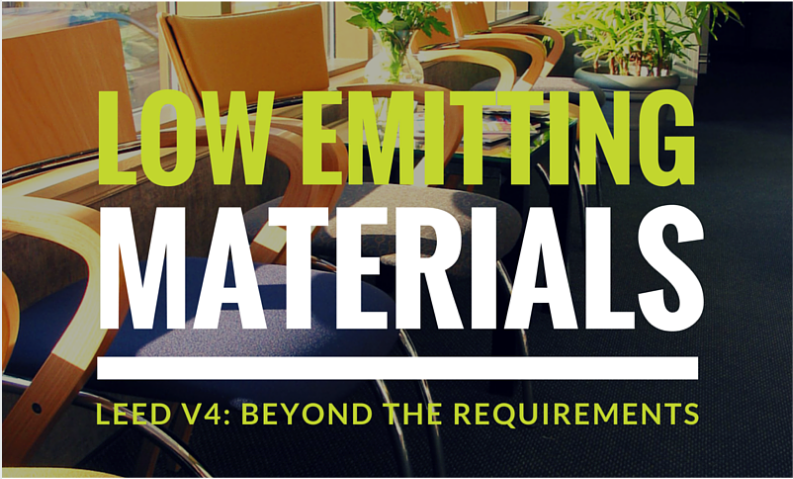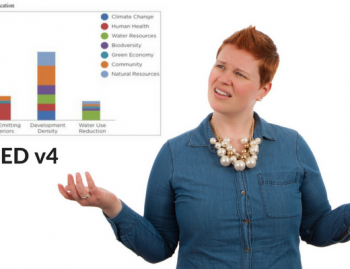
You can smell that smell. The smell of volatile organic compounds (VOCs) surrounds you: your new car, a brand-new marker, a recent carpet installation, a fresh paint job. That smell is increasingly less noticeable thanks to regulations and standards like the LEED® Green Building Rating System.
When I taught the old 8-hour LEED Technical Review workshops, I used the Low-Emitting Materials credits to demonstrate the low-hanging fruit of green design. These were the gimme credits. Product manufacturers didn’t want to make paints and adhesives just to meet California standards, and another set of products for the rest of the world. The referenced standard for carpet was written by that industry’s trade association. No-added urea-formaldehyde in composite wood was the only real challenge presented by the suite of credits.
Not so any longer. Now it’s complex if not complicated.
In developing LEED Version 4, the US Green Building Council (USGBC) Environmental Quality Technical Advisory Group (EQ TAG) wanted to get the most health value out of the limited number of points we had to work with. We arguably had the toughest credit category, covering a broad range of topics including pollutants, ventilation, and occupant experience. But the algorithm that determined the total number of points for the EQ category didn’t give us enough points to be as comprehensive as we would have liked. I really wanted to commandeer the point for having a LEED AP on your project, but it was not to be. We had to be efficient. Counting grams per liter of VOCs wasn’t’ going to cut it anymore. Those content standards were written to address ambient air quality and smog production. Occupant health effects stemmed from what people were actually exposed to - the emissions.
The sub-committee assigned to this credit was comprised of scientists, manufacturers, and one lonely practitioner, who happened to also be an industrial hygienist: me. Our charge was to strike a balance between rigor and practicality.
For rigor, there were two major tenets. One: base compliance on emissions of the entire assembly. Two: use independent third party referenced standards. This commitment would up the game for manufacturers, testing organizations, and practitioners because everyone liked the “show-me-the-list” simplicity of the LEED-2009.
For manufacturers there is a learning curve to understand not only what type of testing to do, but what information to provide to practitioners. Of the early manufacture tech sheets I saw, none of them disclosed the total VOC range (TVOC) as required in the credit language. It’s part of the test, but not compliance. The point of the requirement is to increase transparency for practitioners so they could make better design decisions.
To level the playing, field third party certification organizations now had to adopt the referenced standard rather than using their proprietary test methods. As you can imagine there was some resistance. The 3rd party certification table includes the organizations that agreed to make those changes. Hopefully that list will grow.
As for practitioners, the sticking point is the matrix of thresholds, standards, and calculations. How much compliance is enough? The current credit calculations are a result of many conversations around the balance between rigor and practicality. They appear more daunting than they are. It could have been much worse; an early iteration of the credit calculated compliance in terms of 1/32 of a point – certainly overly granular for an allocation of 3 total possible points. The current budget calculation is basically a simple average to be referenced against a set threshold. Fortunately the Low-Emitting Materials Calculator provided by USGBC goes a long ways towards easing that pain point.


